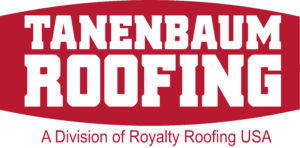Home » Hurricane-Proofing Your Home: How To Keep Your Roof Protected
Hurricane-Proofing Your Home: How To Keep Your Roof Protected
When facing the fury of a hurricane, one of the most vulnerable parts of your home is the roof. Strong winds, flying debris, and torrential rains can all wreak havoc on your roof, potentially leading to extensive damage and compromising the safety of your entire property. To safeguard your home and loved ones, it is essential to take these proactive measures to hurricane-proof your roof.
1. Inspection and Maintenance
Before implementing any additional measures, it is crucial to ensure that your roof is in good condition. Regular inspections by a professional roofer can help identify and address any existing issues such as loose or missing shingles, damaged flashing, or weakened structures. Prompt repairs will not only improve the overall integrity of your roof but also enhance its ability to withstand hurricane-force winds.
2. Reinforce the Roof Structure & Securing Roof Features
Strengthening the roof structure is an essential step in hurricane-proofing your home. You want your roof to be as secured as possible to withstand the high winds of a hurricane. One way to secure your roof is to install hurricane straps or clips. These metal connectors help anchor your roof trusses or rafters to the wall, providing enhanced resistance against uplift forces.
There are also other elements to consider when securing your roof. Certain elements of your roof, such as vents, skylights, and chimneys, can become weak points during a hurricane. It is important to make sure these types of roof features are reinforced with the best possible impact-resistant materials.
3. Roofing Materials and Design:
Choosing the right roofing materials and design can significantly improve your roof’s resilience against hurricanes. Impact-resistant shingles are designed to withstand flying debris and offer better protection against wind uplift. Metal or tile roofs are also a great option for hurricane resistance. They are durable and can withstand strong winds better than traditional asphalt shingles. These materials are also fire-resistant and have a longer lifespan. The shape or slope of your roof can also play a role in its fight against high winds. Roofs with steeper slopes or hip-shaped designs are more aerodynamic and can minimize wind resistance, making them less prone to damage.
4. Maintain Surrounding Landscape
The surroundings of your property can also affect your roof. A well-maintained landscape can help minimize the risks associated with hurricanes. Regularly trim trees and remove weak or overhanging branches that could potentially fall on your roof during a storm. Keep gutters and drains free from debris to ensure proper water flow. Clogged systems can lead to water pooling on your roof, causing damage over time. Secure outdoor furniture, potted plants, and other loose items that could become projectiles during strong winds. These are easy steps you can take as a homeowner to maintain and protect the integrity of your home.
Protecting your roof from the devastating effects of a hurricane is essential for the safety and security of your home. By conducting regular inspections, reinforcing the roof structure, selecting appropriate materials, and securing vulnerable features, you can significantly increase your roof’s ability to withstand hurricane-force winds. Additionally, maintaining a well-manicured landscape will reduce potential risks during severe weather events. Remember, investing in proactive measures to hurricane-proof your roof is a worthwhile endeavor that ensures the long-term protection of your home and loved ones.



